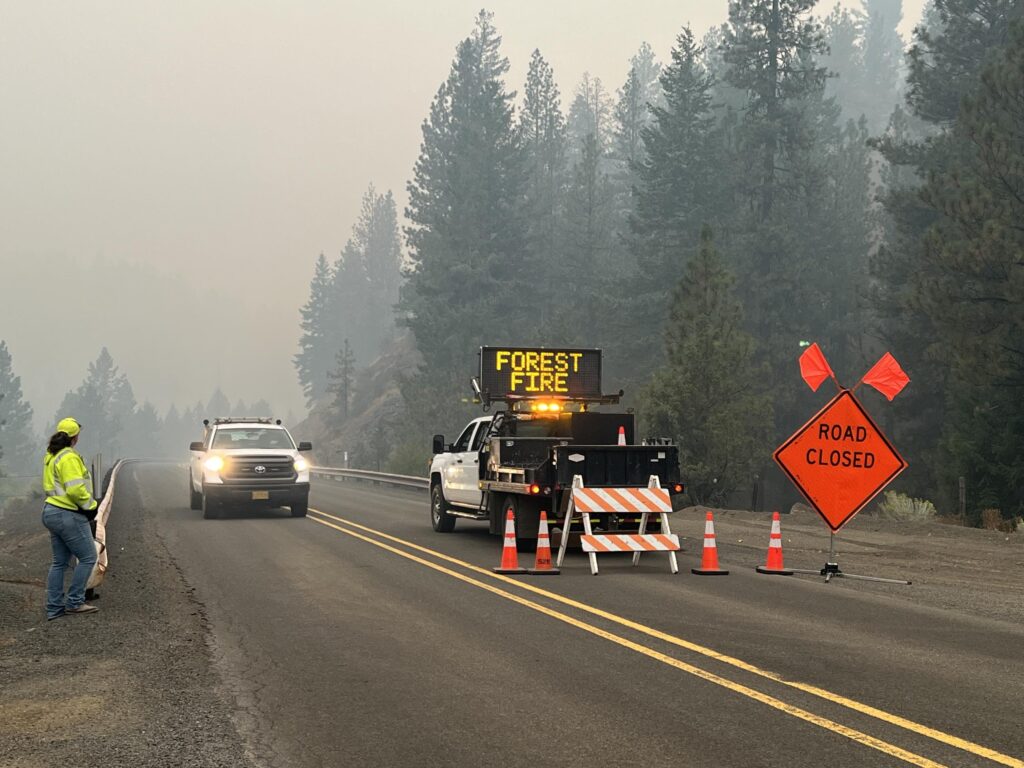A road closure from the Fossil Complex fires in central Oregon in September. The fires have burned nearly 25,000 acres. (Courtesy of Northwest Interagency Coordination Center)
Oregon’s forest and fire leaders were succinct in describing this year’s wildfire season to a group of Oregon senators.
“It just won’t quit is essentially where we’re at, and our folks are really tired,” Kyle Williams, deputy director of fire operations at the Oregon Department of Forestry, told the Senate Committee on Natural Resources and Wildfire on Tuesday.
Williams and two others – Doug Graffe, Gov. Tina Kotek’s wildfire and military advisor; and Travis Medema, a chief deputy for the Oregon State Fire Marshal – told senators the state would likely wrap up its now five-monthlong fire season in mid-October, following a record 1.9 million acres burned. That’s nearly three times as many acres as the state’s 10-year average.
Medema said projections from the Northwest Interagency Coordination Center, which coordinates wildfire resources, showed one or two more “significant event days” before the state is fully out of the 2024 wildfire season.
The Oregon Department of Forestry is currently fighting a 300-acre fire near Coos Bay and the Fossil Complex in eastern Oregon, made up of five fires over nearly 25,000 acres.
“We’re finally on the downhill of the slope,” Williams said, but warned that forecasts from the National Oceanic and Atmospheric Administration show 10 days ahead of dry and above average temperatures. “What’s next is what we’re focused on, and we’re in good shape. We’re mostly back in the barn ready to go again.”
The bulk of the wildfires have burned through east Oregon grass and shrub, with about 25% of it in forestland, according to the Wildland Mapping Institute. More than one-third of all acres blackened have been on private land, and about 62% has been on federal land. Most wildfires are caused by humans, according to the interagency coordination center, but this year the bulk of blazes have started from natural causes, such as lightning.
The wildfires prompted Kotek to declare a statewide emergency and ask for federal help and regulatory flexibility for farmers and ranchers. She’s also invoked the Conflagration Act 17 times this year, with the latest invocation on Sept. 10 for the Service Fire in Wheeler County. The act unleashes resources to fight blazes that threaten lives, communities or key infrastructure.
GET THE MORNING HEADLINES DELIVERED TO YOUR INBOX

